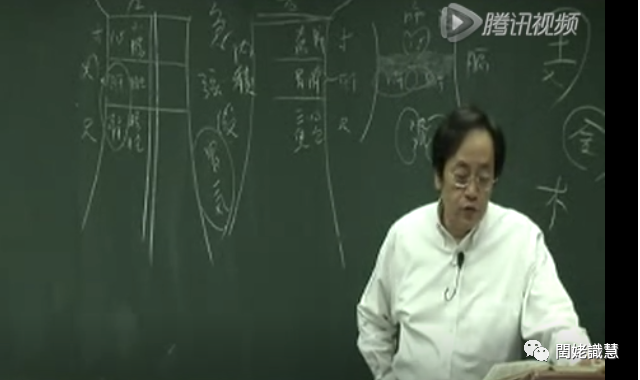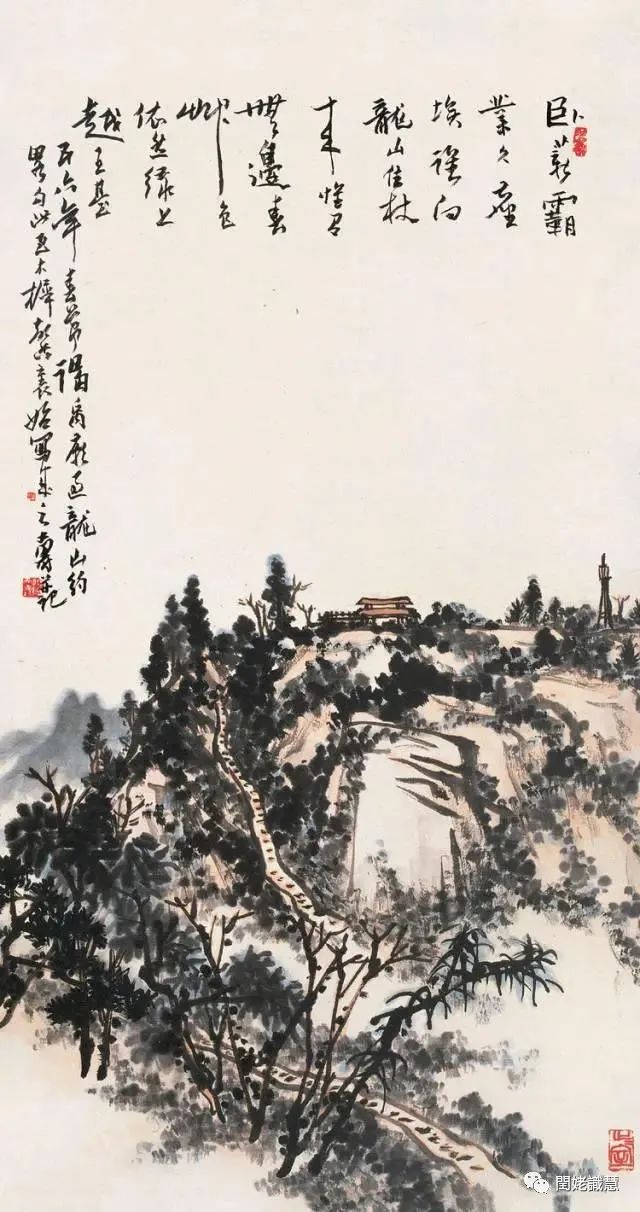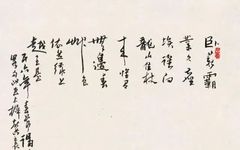
Section 7 Blood in Stool, Thin Pulse, Slippery Pulse
If the pulse is thin and deep, it indicates a Shaoyin (Lesser Yin) condition. This is often felt when the pulse is very thin and deep at the bone’s edge. When the pulse reaches the bone, remember that the bone corresponds to the kidney, right? The pulse is very thin and small, located at the bone’s edge, indicating a Shaoyin issue.
However, if the pulse is vertical and when pressed down, there is a special pulse that remains at the bone’s edge. When you press your finger down to the bone, the pulse is still there, indicating that there is a solid accumulation inside. This is referred to as the Fugu (附骨) pulse, which is attached to the bone. This pulse indicates the presence of tumors or other growths near the bone. If the liver pulse is felt at the bone’s edge, it indicates a tumor in the liver, which can be immediately recognized.
So, if we simplify the pulse diagnosis to differentiate between deficiency and excess, a deficient pulse will disappear when pressed to the bone, while an excess pulse will still be present. This is the basic differentiation of deficiency and excess. However, to differentiate Yin and Yang, we can compare the cun (寸) and chi (尺) positions, which allows for a simple differentiation of Yin and Yang.
If the pulse is thin and scattered, it does not remain fixed in one place, indicating a condition of cold and heat. A floating and scattered pulse indicates that Yang has risen to the surface. Normally, Yang should be balanced with Yin, so a normal pulse in a healthy person will slope downwards, with 9 parts above and 1 part below, which is our standard pulse.
Here, the pulse is described as floating and scattered. If the pulse rises, it indicates that Yin is dominant and Yang is weakened and scattered. When Yang rises, it can cause dizziness and fainting.
In clinical practice, we often see patients who come in with unexplained fainting spells. One patient said he fainted without any apparent reason, and when he regained consciousness, he felt fine again. This is a case of Yang rising to the surface.
When Yang rises, it is because Yin cannot stabilize Yang. Therefore, when Yin and Yang are balanced, the symptoms resolve.
One patient, aged 48, after taking a dose of medicine, said he felt better than he had in 30 years since graduating high school. This demonstrates the effectiveness of Traditional Chinese Medicine.
So remember, symptoms of dizziness and fainting indicate that Yang is not being contained. If all pulses are floating but not dry, what do we mean by dry?
When you inhale, the pulse should jump twice, and when you exhale, it should jump twice. If now, when you inhale, the pulse jumps three times, and when you exhale, it jumps three times, with a pause in between, this is called a dry pulse.
A floating pulse that is not dry indicates that the disease is in Yang, which is associated with heat. If the pulse is floating and dry, the disease is in the hands. A dry pulse indicates a problem in the upper body.
All pulses that are thin and deep indicate that the condition is in Yin, leading to bone pain. If the pulse is thin and deep, it is located in the feet. The hands represent Yang, while the feet represent Yin. Therefore, when we differentiate, the feet are Yin. All thin and deep pulses are found at the bone’s edge, and the term ‘static’ refers to a pulse that is relatively slow.
A pulse that is rapid and fluctuating indicates a problem in Yang. If the pulse beats rapidly, a normal pulse should maintain a stable rhythm. If it suddenly changes speed, this indicates a problem in Yang, as speed relates to Qi. This can lead to blood in the stool.
For all excess conditions, we must examine them. Why does blood appear in the stool? I have treated many such cases. In the human body, blood vessels are present in all organs, including the large and small intestines. If blood appears in the stool, it may be due to arterial blockage or detachment, or inflammation of the large intestine. Patients may have no inflammation, yet blood is expelled with the stool, or it may manifest as blood in the urine.
When blood is expelled, as mentioned earlier, if blood is one liter, it corresponds to one organ segment; two liters correspond to two segments, and three liters correspond to three segments. I cannot measure this directly; you would need to provide a cup for measurement, which is impractical. This is referred to as one liter being the daily amount. If a person expels three liters of blood in a day, it corresponds to three organ segments.
In Traditional Chinese Medicine, when blood flows through the meridians, it should not leak out. This indicates that Yin and Yang are in harmony.
If Yin and Yang are not in harmony, blood will deviate from its path. The concept of containment is that Yang must contain, and when Yang is deficient, Yin will overflow. This is a relative relationship, similar to the dynamics in a marriage. Sometimes, if one partner is too dominant, a slight push is needed to restore balance.
This is not just my opinion; even the “Huangdi Neijing” states that the Yellow Emperor found the questions too tedious. He said he had already discussed this with Qibo, who was often at odds with him, and he would be executed for any disagreement. Qibo dared to say he had already covered this topic, which shows the importance of balance.
Therefore, Yang must be contained. If Yang is not contained, it leads to blood in the stool. Thus, rapid fluctuations in the pulse indicate a problem in Yang.
The thin pulse indicates a standard deficiency of Yin. When Yin is insufficient, Yang is excessive. When feeling the pulse, it is not smooth. The speed, shape, and strength of the pulse all relate to Qi. When feeling the blood’s speed within the pulse, if it is sluggish, it indicates insufficient Yin.
Insufficient Yin can lead to excessive Yang. The slippery pulse indicates an excess of Yin. What is a slippery pulse? When you feel it, the pulse is rapid, and you can feel the blood flowing very smoothly within the vessels, indicating a slippery pulse.
When feeling the pulse, remember that the cun pulse is higher, while the chi pulse is lower. Therefore, when you feel it, there is a slope; it is not flat. You must have this concept in mind when feeling the pulse. Without a standard, how can you determine what is normal or abnormal? From this perspective, you can learn to feel the pulse accurately.

Source: Internet
The articles published by this account are mostly excerpts from publicly available content online, intended for reference and learning purposes only, and should not be used as a basis for diagnosis or treatment. If needed, please consult a physician for guidance. If there are any copyright issues, please address them.
Heat and Evil Wind – Ni Haixia’s “Huangdi Neijing” Chapter 18, Section 3, Four Classic Texts (5)
Color Pulse Differentiation of Chronic and Acute Illness – Ni Haixia’s “Huangdi Neijing” Chapter 18, Section 3, Four Classic Texts (4)
Pain in Four Seasons (Joint Pain, Allergies) – Ni Haixia’s “Huangdi Neijing” Chapter 18, Section 3, Four Classic Texts (3)
Origin of Diabetes (Dan) – Ni Haixia’s “Huangdi Neijing” Chapter 18, Section 3, Four Classic Texts (3)
Heart Pulse Patterns – Ni Haixia’s “Huangdi Neijing” Chapter 18, Section 3, Four Classic Texts (2)
Liver, Spleen, Kidney, Stomach Pulse Patterns – Ni Haixia’s “Huangdi Neijing” Chapter 18, Section 3, Four Classic Texts (1)
Dreams and Yin-Yang: Disaster Colors – Ni Haixia’s “Huangdi Neijing” Chapter 17, Pulse Essentials (17.6)
Seasonal Changes and Yin-Yang Variations – Ni Haixia’s “Huangdi Neijing” Chapter 17, Pulse Essentials (17.5)
Strength of Zang Qi and Disease of Guange – Ni Haixia’s “Huangdi Neijing” Chapter 17, Pulse Essentials (17.4)
Lupus Erythematosus, Qi Color, Qi Transformation – Ni Haixia’s “Huangdi Neijing” Chapter 17, Pulse Essentials (17.3)
Five Zang and Five Colors – Ni Haixia’s “Huangdi Neijing” Chapter 17, Pulse Essentials (17.2)
Pulse Essentials – Ni Haixia’s “Huangdi Neijing” Chapter 17, Pulse Essentials (17.1)
Distinguishing Yin and Yang – Ni Haixia’s “Huangdi Neijing” Chapter 16, Diagnostic Essentials (16.4)
Short Needle Technique – Ni Haixia’s “Huangdi Neijing” Chapter 16, Diagnostic Essentials (16.3)
Seasonal Needle Techniques – Ni Haixia’s “Huangdi Neijing” Chapter 16, Diagnostic Essentials (16.2)
Twelve Seasonal Qi and Blood Changes – Ni Haixia’s “Huangdi Neijing” Chapter 16, Diagnostic Essentials (16.1)
Deficiency and Excess Pulses, Solitary Pulses – Ni Haixia’s “Huangdi Neijing” Chapter 15, Jade Plate Essentials (15.4)
Women’s Facial Observation of Yin and Yang – Ni Haixia’s “Huangdi Neijing” Chapter 15, Jade Plate Essentials (15.3)
Yin-Yang Cycles and Balance – Ni Haixia’s “Huangdi Neijing” Chapter 15, Jade Plate Essentials (15.2)
Heavenly Degree, Building Moon, Short Pulse – Ni Haixia’s “Huangdi Neijing” Chapter 15, Jade Plate Essentials (15.1)
Miao Needle Technique – Ni Haixia’s “Huangdi Neijing” Chapter 14, Decoction and Fermentation Theory (14.2)
Yijing Symbolism – Ni Haixia’s “Huangdi Neijing” Chapter 14, Decoction and Fermentation Theory (14.1)
Observing Life and Death – Ni Haixia’s “Huangdi Neijing” Chapter 13, Transforming Essence into Qi Theory (13.2)
Discussion on Good Physicians and Color Pulse Differentiation – Ni Haixia’s “Huangdi Neijing” Chapter 13, Transforming Essence into Qi Theory (13.1)
Heat Positioning and Disease Treatment – Ni Haixia’s “Huangdi Neijing” Chapter 12, Different Methods and Formulas (12.1)
Qi Mouth, Stomach – Ni Haixia’s “Huangdi Neijing” Chapter 11, Five Zang Differentiation (11.3)
Organ Excretion, Fullness and Excess – Ni Haixia’s “Huangdi Neijing” Chapter 11, Five Zang Differentiation (11.2)
Differences in Edema Between Genders, Odd Yuan – Ni Haixia’s “Huangdi Neijing” Chapter 11, Five Zang Differentiation (11.1)
Qi Color and Disaster Color – Ni Haixia’s “Huangdi Neijing” Chapter 10, Five Zang Generation (10.11)
Color Pulse Combination, Long and Short Pulses – Ni Haixia’s “Huangdi Neijing” Chapter 10, Five Zang Generation (10.10)
Pulse Diagnosis Essentials: Slippery, Floating, Thin, Deep – Ni Haixia’s “Huangdi Neijing” Chapter 10, Five Zang Generation (10.9)
Lung Method as the Celestial Canopy – Ni Haixia’s “Huangdi Neijing” Chapter 10, Five Zang Generation (10.8)
Epilepsy, Headache – Ni Haixia’s “Huangdi Neijing” Chapter 10, Five Zang Generation (10.7)
Five Absolute Qi Pulses – Ni Haixia’s “Huangdi Neijing” Chapter 10, Five Zang Generation (10.6)
Liver Jueyin (Sleep and Vision) – Ni Haixia’s “Huangdi Neijing” Chapter 10, Five Zang Generation (10.5)
Eight Winds and Eight Evils – Ni Haixia’s “Huangdi Neijing” Chapter 10, Five Zang Generation (10.4)
Observation Diagnosis: Eye Differentiation of Five Zang Health Status – Ni Haixia’s “Huangdi Neijing” Chapter 10, Five Zang Generation (10.3)
Selection of Medicinal and Food – Ni Haixia’s “Huangdi Neijing” Chapter 10, Five Zang Generation (10.2)
Five Tastes and Their Harm – Ni Haixia’s “Huangdi Neijing” Chapter 10, Five Zang Generation (10.1)
Five Zang and Five Tastes – Ni Haixia’s “Huangdi Neijing” Chapter 9, Six Sections of Zang and Organ Theory (9.7)
Kidney Function, Hair Color, and Bone Marrow – Ni Haixia’s “Huangdi Neijing” Chapter 9, Six Sections of Zang and Organ Theory (9.6)
Zang Patterns – Heart, Lung, Liver, Kidney, Spleen – Ni Haixia’s “Huangdi Neijing” Chapter 9, Six Sections of Zang and Organ Theory (9.5)
Medicinal Materials, Five Colors and Five Tastes – Ni Haixia’s “Huangdi Neijing” Chapter 9, Six Sections of Zang and Organ Theory (9.4)
Astronomy, Five Numbers – Ni Haixia’s “Huangdi Neijing” Chapter 9, Six Sections of Zang and Organ Theory (9.3)
Seasonal Qi and Five Elements – Ni Haixia’s “Huangdi Neijing” Chapter 9, Six Sections of Zang and Organ Theory (9.2)
Heavenly Stems and Earthly Branches Qi – Ni Haixia’s “Huangdi Neijing” Chapter 9, Six Sections of Zang and Organ Theory (9.1)
Ruler’s Organs – Heart and Sanjiao – Ni Haixia’s “Huangdi Neijing” Chapter 8, Linglan Secret Classic (8.2)
Twelve Organ Patterns – Ni Haixia’s “Huangdi Neijing” Chapter 8, Linglan Secret Classic (8.1)
Normal Zang and Fu Organ Yin/Yang – Ni Haixia’s “Huangdi Neijing” Chapter 7, Yin and Yang Differentiation (7.8)
Fullness and Excess of Fu Organs – Ni Haixia’s “Huangdi Neijing” Chapter 7, Yin and Yang Differentiation (7.7)
Normal Yin – Ni Haixia’s “Huangdi Neijing” Chapter 7, Yin and Yang Differentiation (7.6)
Normal Color of Hands, Yin Excess and Yang Deficiency – Ni Haixia’s “Huangdi Neijing” Chapter 7, Yin and Yang Differentiation (7.5)
Yin and Yang Interactions, Five Pulse Patterns – Ni Haixia’s “Huangdi Neijing” Chapter 7, Yin and Yang Differentiation (7.4)
Treatment of Gallstones, Gu Yang Hook Pulse – Ni Haixia’s “Huangdi Neijing” Chapter 7, Yin and Yang Differentiation (7.3)
Three Yang Diseases – Ni Haixia’s “Huangdi Neijing” Chapter 7, Yin and Yang Differentiation (7.2)
Normal Pulses in Men and Women – Ni Haixia’s “Huangdi Neijing” Chapter 7, Yin and Yang Differentiation (7.1)
Three Yang and Three Yin Interactions – Ni Haixia’s “Huangdi Neijing” Chapter 6, Yin and Yang Interaction Theory (6.1)
Surface Diseases, Sweating Methods – Ni Haixia’s “Huangdi Neijing” Chapter 4, Golden Coffer True Words (5.6)
Liver Cancer Treatment – Ni Haixia’s “Huangdi Neijing” Chapter 4, Golden Coffer True Words (5.5)
Heavenly Calendar, Earthly Path – Ni Haixia’s “Huangdi Neijing” Chapter 4, Golden Coffer True Words (5.4)
Yin and Yang Harmony – Ni Haixia’s “Huangdi Neijing” Chapter 4, Golden Coffer True Words (5.3)
Treatment Principles, Yin and Yang Balance – Ni Haixia’s “Huangdi Neijing” Chapter 4, Golden Coffer True Words (5.2)
Five Zang Transforming into Five Qi, Emotions – Ni Haixia’s “Huangdi Neijing” Chapter 4, Golden Coffer True Words (5.1)
Yin and Yang Correspondence – Ni Haixia’s “Huangdi Neijing” Chapter 4, Golden Coffer True Words (5.0)
Five Zang Corresponding to Shape, Color, Qi, and Taste – Ni Haixia’s “Huangdi Neijing” Chapter 4, Golden Coffer True Words (4.4)
Yin within Yin, Yang within Yang – Ni Haixia’s “Huangdi Neijing” Chapter 4, Golden Coffer True Words (4.3)
Human Body Yin and Yang – Ni Haixia’s “Huangdi Neijing” Chapter 4, Golden Coffer True Words (4.2)
Five Winds and Eight Winds, Seasonal Diseases – Ni Haixia’s “Huangdi Neijing” Chapter 4, Golden Coffer True Words (4.1)
Shanghan Lun – Five Tastes and Five Zang Qi Color – Ni Haixia’s “Huangdi Neijing” Chapter 3, Vital Energy Connecting to Heaven Theory (3.7)
Shanghan Lun – Ni Haixia’s “Huangdi Neijing” Chapter 3, Vital Energy Connecting to Heaven Theory (3.6)
Four Images – Relationship Between Yin-Yang and Time – Ni Haixia’s “Huangdi Neijing” Chapter 3, Vital Energy Connecting to Heaven Theory (3.5)
Spirit (Heart), Soul (Liver), Corporeal Soul (Lung) – Ni Haixia’s “Huangdi Neijing” Chapter 3, Vital Energy Connecting to Heaven Theory (3.4)
Yang Qi Opening and Closing – Ni Haixia’s “Huangdi Neijing” Chapter 3, Vital Energy Connecting to Heaven Theory (3.3)
Symptoms of Yang Qi Deficiency, Damp Heat and Warts – Ni Haixia’s “Huangdi Neijing” Chapter 3, Vital Energy Connecting to Heaven Theory (3.2)
Yang Qi Theory – Ni Haixia’s “Huangdi Neijing” Chapter 3, Vital Energy Connecting to Heaven Theory (3.1)
Yin-Yang Pulse Diagnosis – Ni Haixia’s “Huangdi Neijing” Chapter 2, Four Qi Regulating Spirit Theory (2.4)
Yin-Yang Harmony Theory – Ni Haixia’s “Huangdi Neijing” Chapter 2, Four Qi Regulating Spirit Theory (2.3)
Four Qi Regulating Spirit – Liver, Heart, Lung, Kidney – Ni Haixia’s “Huangdi Neijing” Chapter 2, Four Qi Regulating Spirit Theory (2.2)
Seasonal Work and Rest – Ni Haixia’s “Huangdi Neijing” Chapter 2, Four Qi Regulating Spirit Theory (2.1)
Sages and Wise Men – Ni Haixia’s “Huangdi Neijing” Chapter 1, Ancient Heavenly Truth Theory (1.10)
Key Indicators of Male Growth Period – Ni Haixia’s “Huangdi Neijing” Chapter 1, Ancient Heavenly Truth Theory (1.9)
Uterine Fibroids and Menstruation – Ni Haixia’s “Huangdi Neijing” Chapter 1, Ancient Heavenly Truth Theory (1.8)
The Importance of Water – Ni Haixia’s “Huangdi Neijing” Chapter 1, Ancient Heavenly Truth Theory (1.7)
Balance of Five Zang – Ni Haixia’s “Huangdi Neijing” Chapter 1, Ancient Heavenly Truth Theory (1.6)
Women’s Menstrual Cycle and Spleen – Ni Haixia’s “Huangdi Neijing” Chapter 1, Ancient Heavenly Truth Theory (1.5)
Key Indicators of Female Growth Period – Ni Haixia’s “Huangdi Neijing” Chapter 1, Ancient Heavenly Truth Theory (1.4)
Difficulty in the Tenth Difficulty – Five Evils – Ni Haixia’s “Huangdi Neijing” Chapter 1, Ancient Heavenly Truth Theory (1.3)
Analysis of the Dao – Ni Haixia’s “Huangdi Neijing” Chapter 1, Ancient Heavenly Truth Theory (1.2)
Preface – Ni Haixia’s “Huangdi Neijing” (1.1)
Da Jian Zhong Tang Lecture by Hu Xishu – “Jin Kui Yao Lue” – Treatment of Abdominal Fullness, Cold Hernia, and Food Stagnation Pulse Diagnosis (2)

